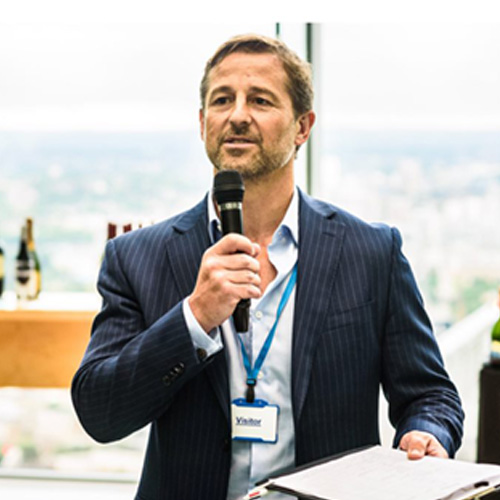According to Gartner, 75% of organisations will have implemented a data centre infrastructure sustainability programme driven by cost optimisation and stakeholder pressures by 2027, up from less than 5% in 2022.
“Responsibilities for sustainability are increasingly being passed down from CIOs to infrastructure and operations (I&O) leaders to improve IT’s environmental performance, particularly around data centres,” said Autumn Stanish, Senior Principal Analyst at Gartner. “This has led many down the path of greater spend and investment in environmental solutions, but environmental impact shouldn’t be the only focus. Sustainability can also have a significant positive impact on non-environmental factors, such as brand, innovation, resilience and attracting talent.”
According to a Gartner survey of 221 respondents from North America, Europe and APAC conducted in the second half of 2022, environmental performance of IT infrastructure is only one facet of a strong I&O sustainability strategy, with most sustainability benefits being indirect.
“Success in aligning the I&O strategy with critical business outcomes requires a more comprehensive approach that recognises the indirect benefits that come with sustainable IT operations,” said Stanish. “This is true specifically for organisations in which IT is material to the business, such as financial services.”
According to the survey, the top three indirect benefits include:
- Reduced costs
The most effective action I&O leaders can take for the environment and their budget is to defer purchasing new equipment and better manage, optimise or redeploy what they already have. According to Gartner, organisations can experience up to 60% in cost savings by simply extending product life spans from three to five years. In addition, optimising for better server utilisation and storage capacity is another way to reduce waste and save money.
- Innovation
Organisations are using sustainable strategies to drive innovation and growth through new products and business models. Technology hardware vendors are rapidly releasing new products and services based on AI technology, analytics insights and circular business models that can be leveraged for innovation. For example, open telemetry platforms may be deployed to track and improve energy efficiency, while simultaneously offering critical insights for IT staff to understand usage patterns that can be optimised for greater, more consistent performance of systems.
“Fewer than half of I&O leaders we speak to are currently taking advantage of the business benefits beyond reduced energy costs,” said Stanish.
- Better risk management and mitigation
In a market disrupted by price fluctuations and supply constraints, organisations can achieve greater resilience and better risk management and mitigation by adopting sustainable recycling and resource utilisation practices. This includes organisations using renewable energy, generating their own power and reusing and redeploying equipment as much as possible.
According to the Gartner survey, more than 85% of business leaders agree that sustainability is an investment that protects the organisation from disruption.
Andrew Gomarsall, Executive Chairman, n2s

At n2s we believe the real question is, ‘Why aren’t IT leaders implementing data centre infrastructure sustainability programmes?’
Looking towards the future, we’re on the brink of a substantial shift in the corporate ethos. Gartner’s predictions represent a significant rise from the mere 5% we saw back in 2022. Such a transition includes embracing renewable energy, creating self-sufficient power and most importantly, maximising the reuse and redeployment of equipment.
According to Gartner, the most beneficial action that I&O leaders can take for both the environment and their budget is to put a pause on acquiring new equipment. Instead, the focus should be on better managing, optimising and redeploying their existing resources. By extending the lifespan of products from three to five years, organisations could pocket savings up to 60% in costs.
This sentiment aligns perfectly with ours. After all, who wouldn’t agree considering over 50 million tonnes of e-waste is generated globally each year? It’s the equivalent of the total weight of every commercial aircraft ever built, according to the UN. Hence, it’s crucial to extend the life of fully functional IT equipment through sustainable and regulated refurbishment and resale processes.
However, we would argue that we need to push this idea further. In our drive for conservation, we can’t afford to overlook the environmental impact of a product’s end of life, or the carbon and water consumed during the manufacturing phase. With mandatory Scope 3 emissions reporting on the horizon, we must consider the complete life cycle of our equipment and the circular economy.
Interestingly, between 70-90% of the lifetime ‘embodied’ energy of IT server, storage and network equipment is consumed before it’s even put to use. This encompasses everything from sourcing raw materials, component manufacturing, production and final delivery. A staggering 90% of this can be attributed to PCB production.
For a data centre infrastructure sustainability programme to succeed, we need a holistic, ‘circular’ approach to IT equipment life cycle management, with reuse and recycling at the forefront. Such an approach can help to decarbonise the supply chain and conserve precious resources.
To achieve this, it’s essential to measure and track the IT asset life cycle, including sustainable reuse once decommissioned and disposal when repair is no longer viable. In-depth environmental impact reporting on the types and weights of decommissioned equipment, the proportion reused or resold, and the percentage recycled or disposed of, is increasingly necessary.
By understanding their environmental position, companies can make decisions that support their sustainability reduction targets – from procurement to retention and disposal. By asking the right question, we can drive the right actions towards a more sustainable future.
Aoife Foley, IEEE Senior Member and Professor in the School of Mechanical and Aerospace Engineering, Queen’s University Belfast

Modern enterprises continuously generate and accumulate vast amounts of data. This includes routine activities across enterprise systems, machines, sensors and demand-side digitalisation. All this data comes in multiple forms – whether redundant or critical. However, the majority is unstructured and inert content, commonly referred to as ‘dark data’ which is becoming more prevalent. The result is a large volume of digital data that needs to be stored, most of which will not even be accessed later.
Increased storage drives power demand which is carbon-intensive and largely generated from non-renewable sources. According to Veritas Global’s Databerg Report, the storage power required to hold and process global dark data is estimated to emit 5.8 metric tons of CO2 annually. Moreover, storing a massive amount of dark data on a conventional hard disk drive (HDD) and solid-state drive (SSD) storage type wastes a significant amount of energy from non-renewable sources to keep stored data alive.
Although it is impossible to calculate precisely, the entire ICT sector is estimated to account for about 1.4% of CO2 emissions globally. Infrastructure and operations leaders have a responsibility here and need to consider the unnecessary waste associated with data storage and commit to generating power from more renewable sources. By eliminating unstructured data and improving operational efficiency, organisations can lower their maintenance costs and improve regulatory compliance.
Huge strides in energy efficiency including a shift to efficient ‘hyperscale’ data centres have helped to curb data centre electricity demand and emissions globally. At the local level, however, these facilities represent huge electricity demands, adding pressure to electricity grids and increasing the challenge of energy transitions, especially in smaller countries. Data centres also continue to rely on vast amounts of water for computer cooling, which is unnecessary and places further strain on local markets. In theory, data centres and server rooms could be powered by purely renewable energy.
However, there is a long way to go yet. In the meantime, those managing data centres and server rooms must strive for a high standard of energy efficiency, demonstrated through aggressive Power Usage Effectiveness (PUE) targets. Achieving sustainability means addressing environmental considerations during solution design as well as during the build. Solutions must meet pre-defined and agreed environmental sustainability criteria. This includes filtering dark data, removing unnecessary information from storage and relying upon ‘greener’ energy sources.
James Reid, Technical Manager, MIDEL

Data centres are critical infrastructure assets enabling the continued digitisation of societies, placing responsibility in the hands of the IT industry to ensure that our relentless appetite for data is met while ensuring we do not waste energy and resources. The processing and storage of information is a power-hungry activity – during the past 20 years EU data traffic has been growing exponentially at a 50% compound annual growth rate (CAGR). So how can we manage data centre growth without impeding decarbonisation and net zero objectives?
The answer is a data centre infrastructure sustainability (DCIS) programme.
Developing a DCIS system can help to reduce the environmental impact of data centres by improving energy efficiency and reducing greenhouse gas emissions. This can be achieved by using more energy efficient infrastructure, adopting best practices for data centre design and operation and optimising the cooling and power systems.
Here’s an example: for data centres, electrical transformers are used to step down high voltage (HV) to low voltage (LV). In this process, energy losses occur. Some transformers are more efficient when it comes to minimising these losses. While both cast resin and ester fluid-filled transformers are appropriate in data centre applications due to their fire safety. Ester-filled transformers have lower total losses – an important consideration as data centre transformers typically have a high load factor. Accordingly, using an ester-filled transformer will translate to increased cost savings. Plus, the higher fire point for ester insulating fluids (>300°C vs. 170°C for the more common insulating fluid, mineral oil) meets stringent fire safety regulations, so these transformers can be located inside and outside buildings and mitigate the need for protective walls (and in sustainability terms, means using less concrete).
Operational expense is also a factor; as energy costs continue to rise, energy efficiency becomes more critical for data centre operators. With a sustainability programme, data centre operators can reduce energy consumption and, in turn, lower their operating costs.
Of course, the regulatory framework surrounding data centres is growing in influence. The Netherlands, for instance, has had to impose certain restrictions to ensure that new data centre developments occur within certain zones with limits on power consumption and floor area. Meanwhile, Singapore recently placed a pause on new data centre developments due to pressure on water resources and electricity. Implementing a sound DCIS can help data centre owners comply with regulatory requirements – which are likely to become even stricter in future and more punitive for transgressors.
Simply put, DCIS programmes are critical initiatives for reducing the environmental impact of data centres. Industry leaders should implement them to ensure the long-term viability of their data centre operations. By doing so, they can demonstrate their commitment to sustainability, reduce operating costs, improve energy efficiency and play an active part in making a cleaner, greener world.
Paul Mellon, Operations Director, Stellium Datacenters

From an environmental perspective, data centres consume significant amounts of energy and contribute to carbon emissions. By implementing a sustainability programme, leaders can reduce their environmental impact by optimising energy efficiency, adopting renewable energy sources and minimising waste generation. This helps in combatting climate change and promoting a greener future.
Embracing renewable energy sources – such as solar and wind power which has been utilised at Stellium – enables us to reduce our reliance on fossil fuels and minimise our carbon footprint. By incorporating sustainable energy solutions, organisations can contribute to a greener energy grid while enhancing sustainability credentials.
Sustainability initiatives often lead to cost savings. By improving energy efficiency, data centres can lower their electricity consumption, resulting in reduced utility bills. Additionally, implementing measures to reduce waste and improve resource management can minimise operating costs and enhance overall operational efficiency.
Regulatory bodies are increasingly focusing on environmental regulations and policies. By implementing a sustainability programme, infrastructure and operations leaders ensure compliance with these regulations, avoiding penalties and legal issues associated with non-compliance. It also demonstrates a commitment to corporate social responsibility.
Sustainable practices have become a crucial factor in shaping an organisation’s reputation. Customers, investors and other stakeholders expect businesses to now operate responsibly and demonstrate environmental stewardship. Implementing a sustainability programme showcases a commitment to sustainability, which can enhance brand reputation, attract new customers and strengthen relationships with stakeholders.
These programmes also drive innovation by encouraging the exploration of new technologies, methodologies and best practices which lead to the development of cutting-edge solutions and differentiation in the marketplace from competitors. Organisations that demonstrate a commitment to sustainability gain a competitive advantage by attracting environmentally conscious customers and staying ahead of evolving industry trends.
Such programmes encourage the adoption of resilient and future-proof technologies and practices within the data centre. This includes exploring energy-efficient hardware, implementing effective cooling and power storage systems such as immersion and liquid cooling and BESS (battery-based energy storage) and embracing virtualisation and cloud technologies. Such measures not only improve operational efficiency but also enhance the data centre’s ability to adapt to future technological advancements and changing business needs.
Sustainability initiatives boost employee engagement and satisfaction. Employees value working for companies that prioritise environmental responsibility. By implementing a sustainability programme like we have at Stellium, leaders can create a positive work culture and attract and retain top talent who share the organisation’s values.
In summary, implementing a sustainability programme in the data centre offers benefits such as improved energy efficiency, cost savings, renewable energy integration, waste reduction, water conservation, enhanced corporate social responsibility, regulatory compliance, increased resilience and employee satisfaction. These advantages contribute to long-term operational efficiency, reduced environmental impact and create a positive brand image and environment for the company.
Click below to share this article


